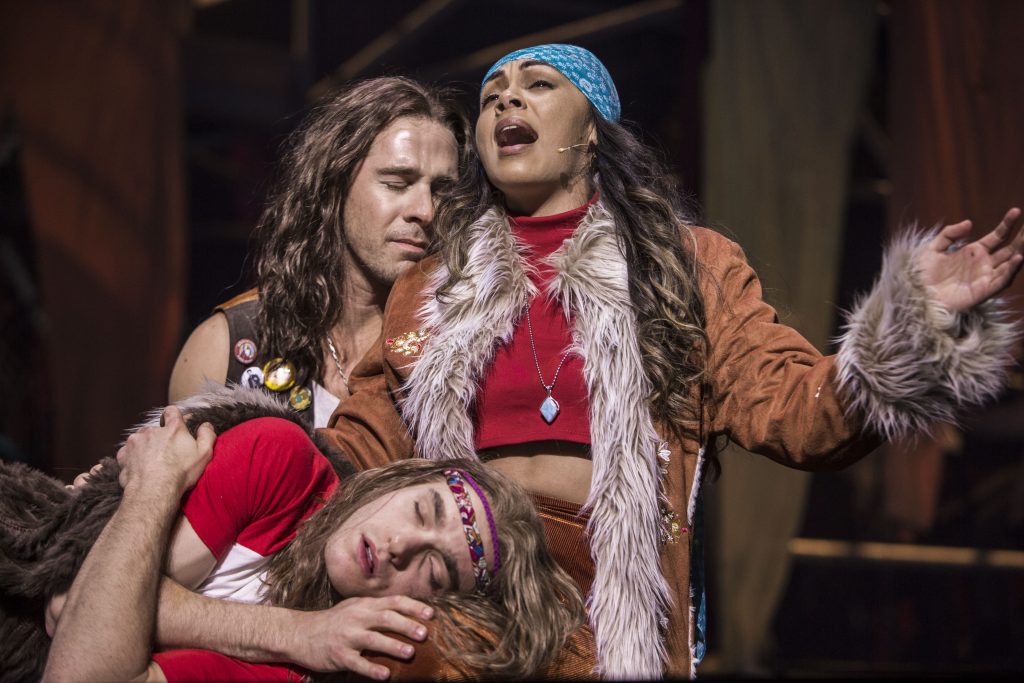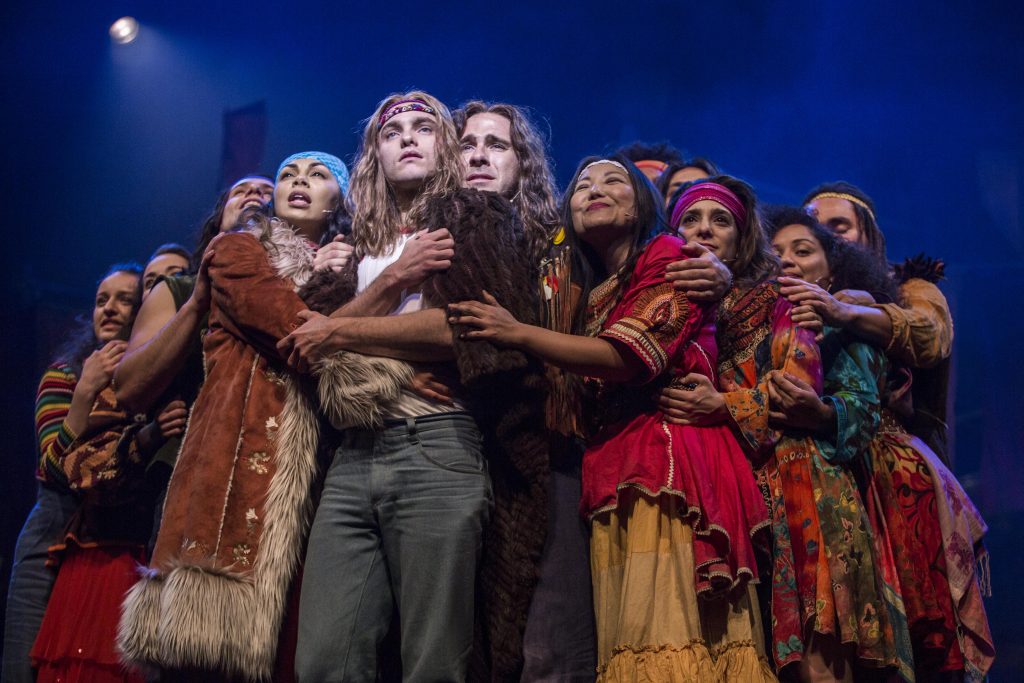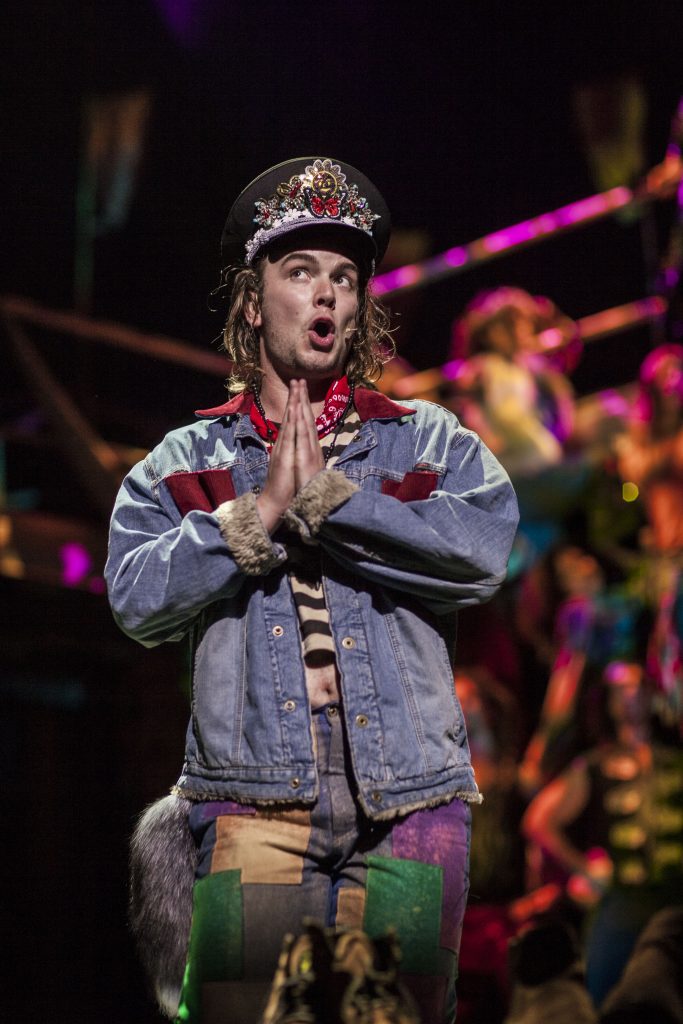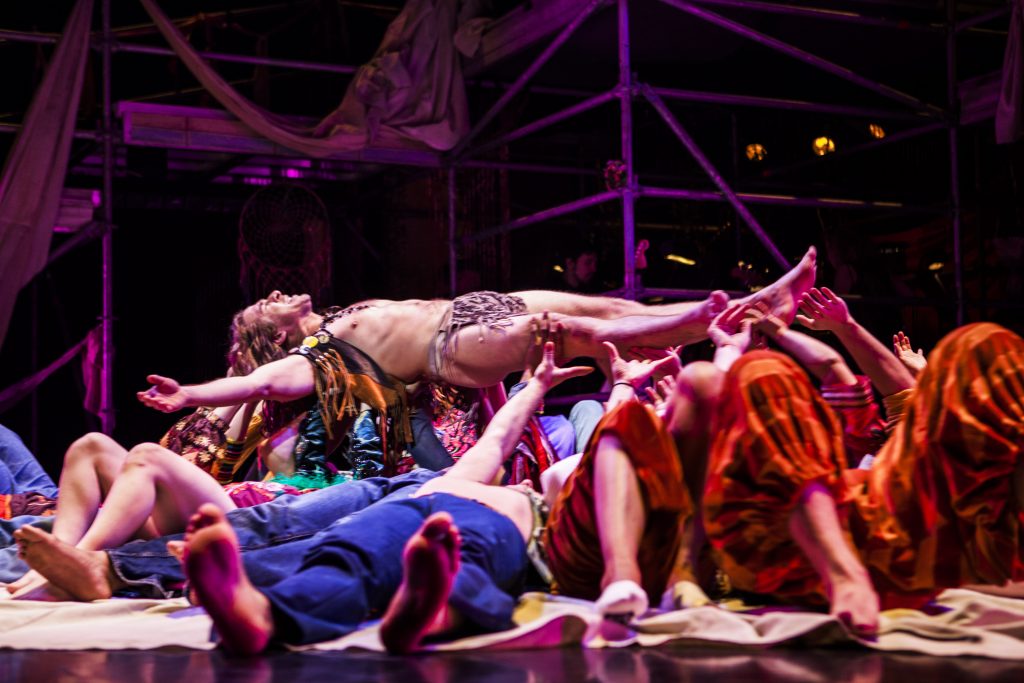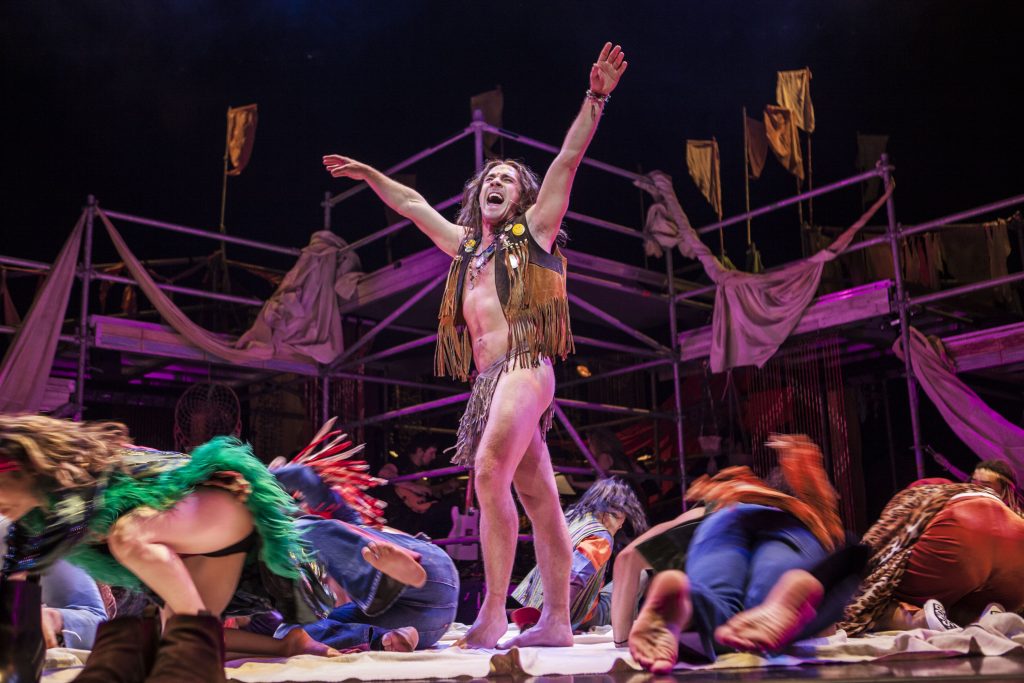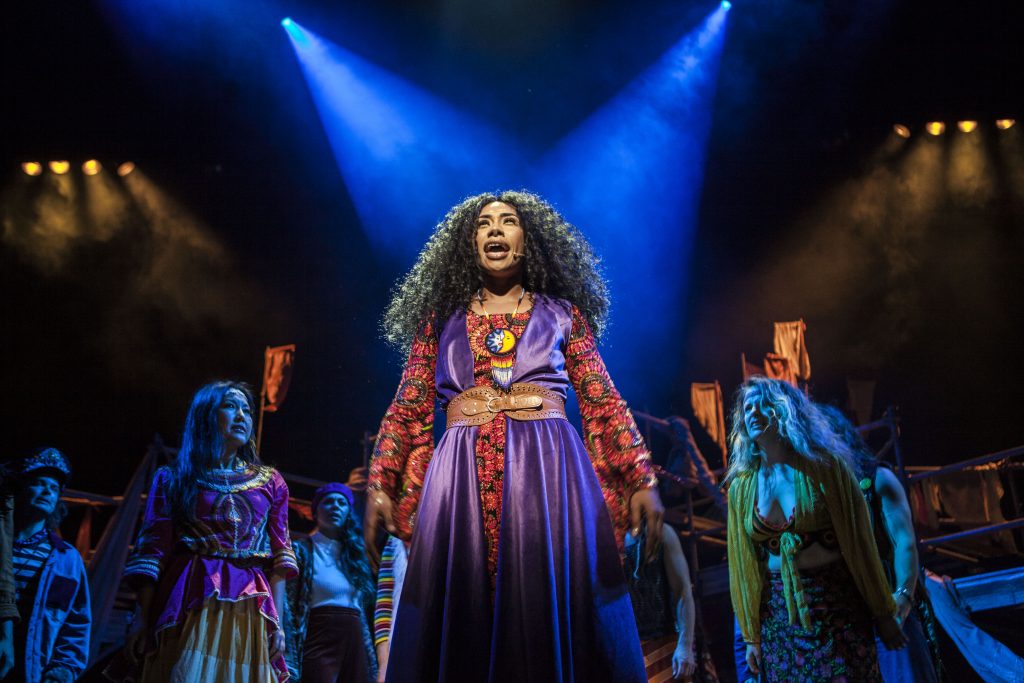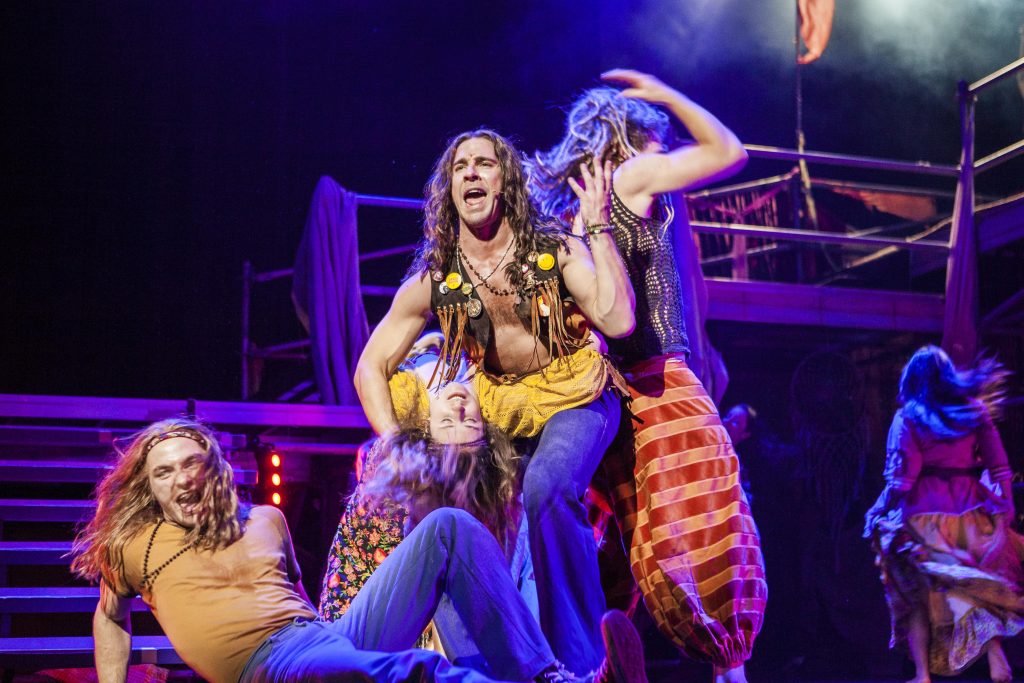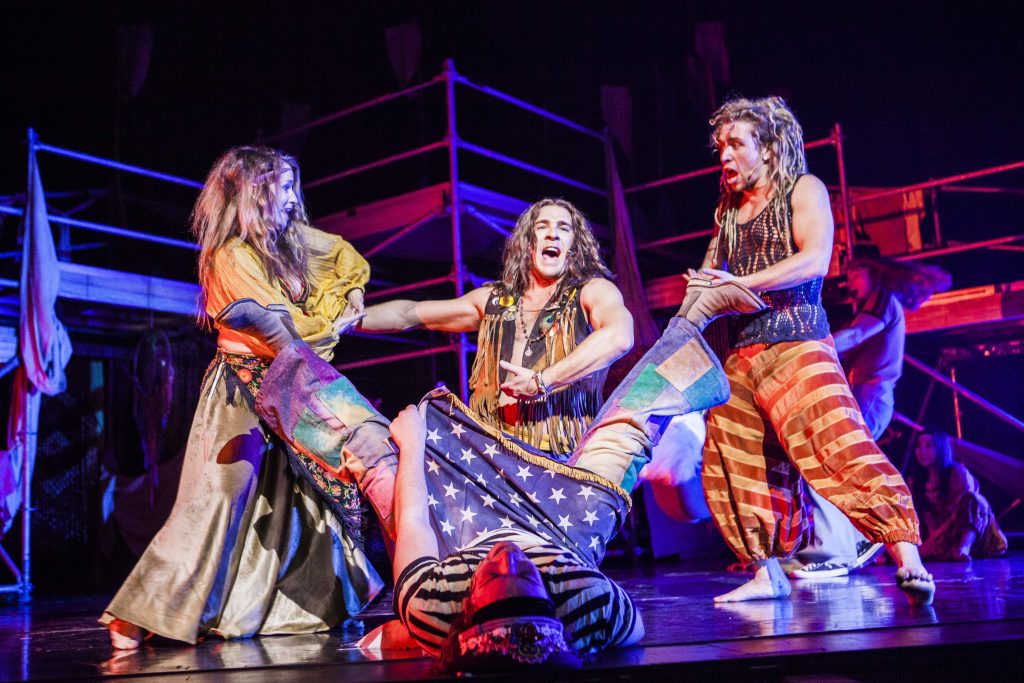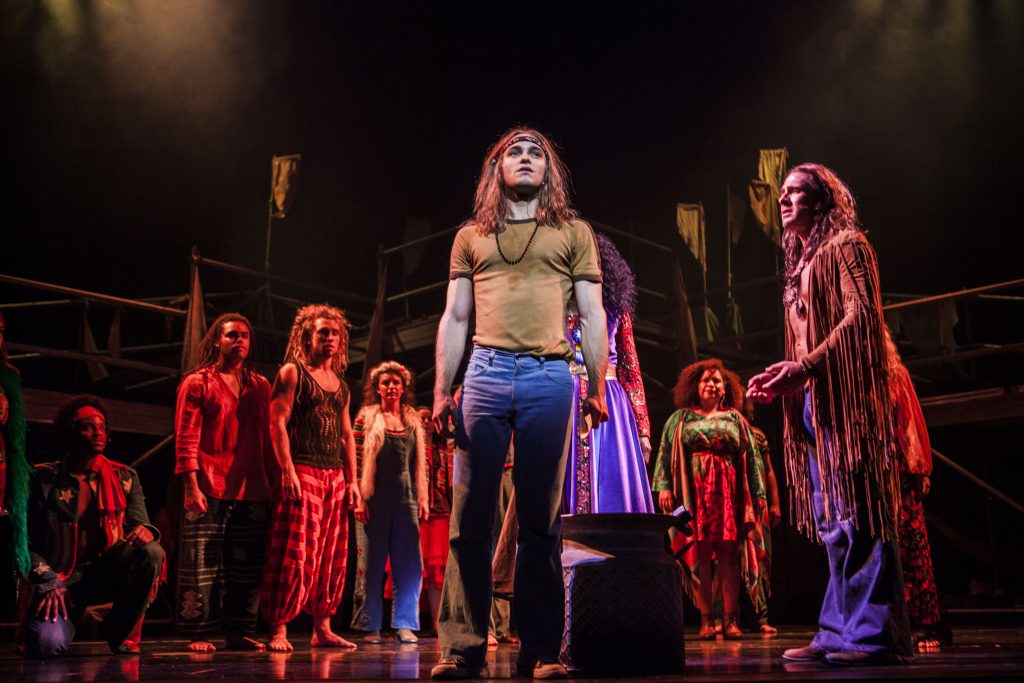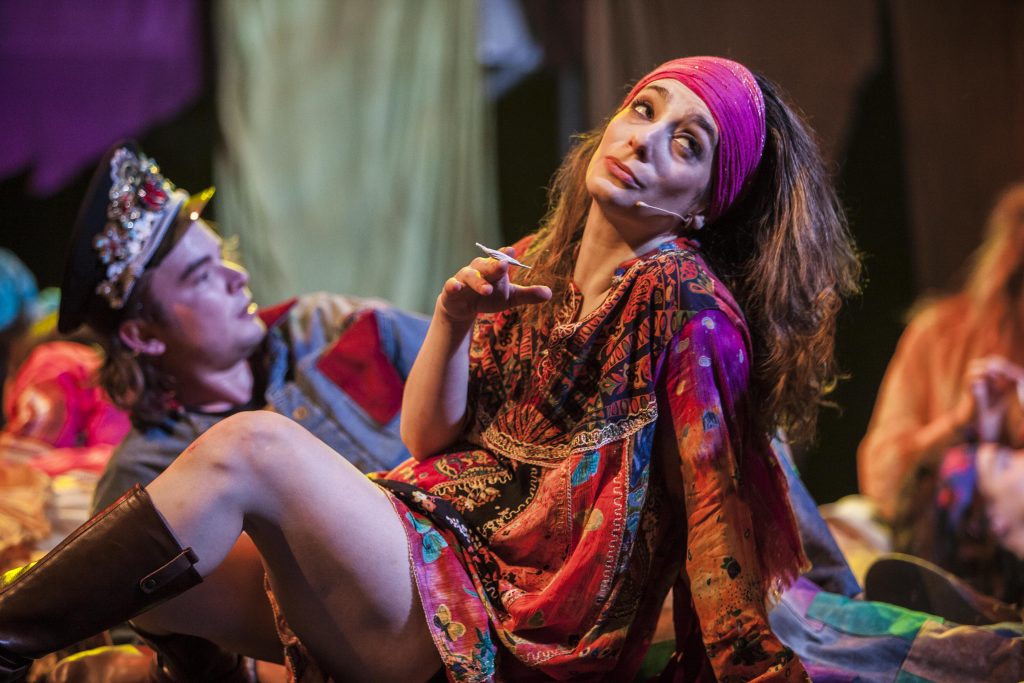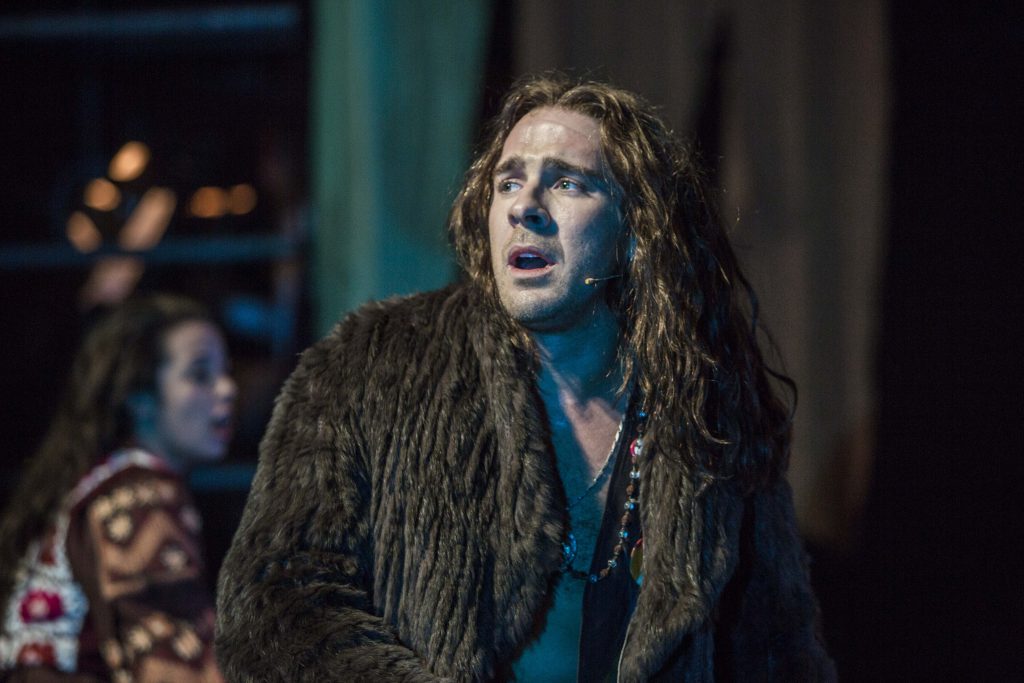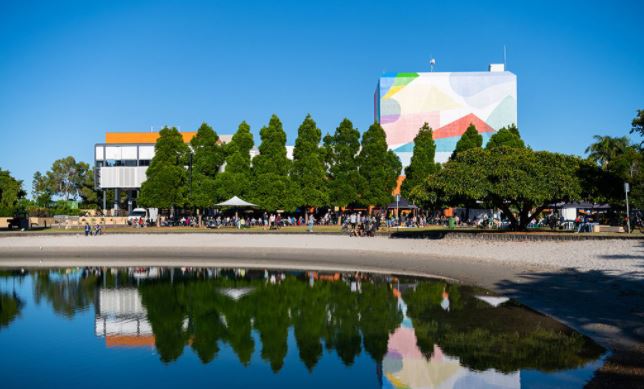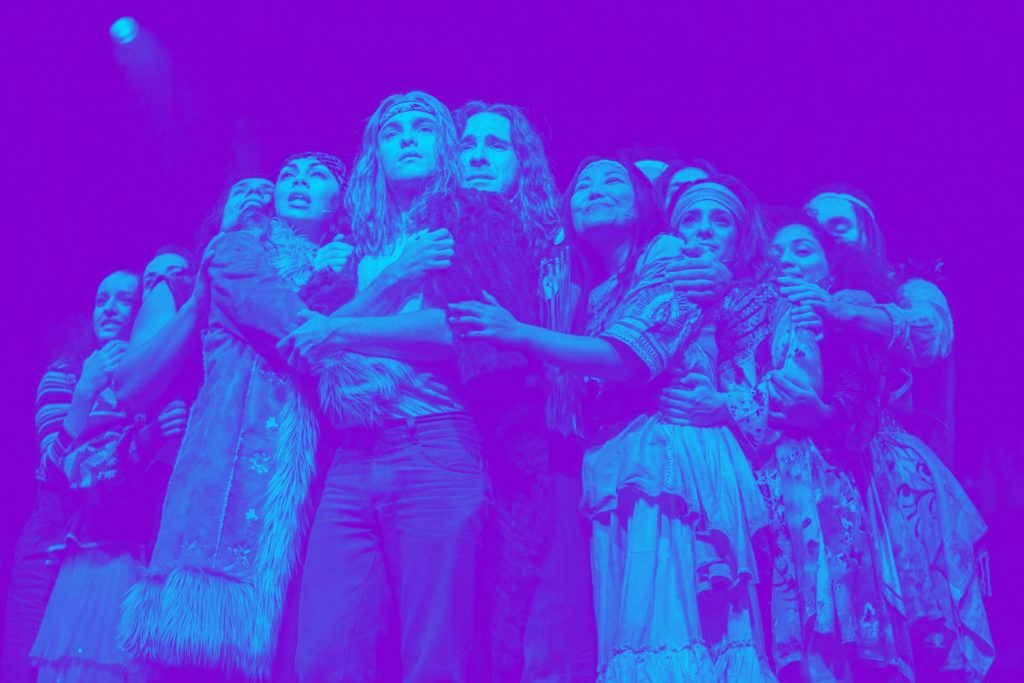
‘Hair’ // Peace Productions Pty Ltd
‘Hair’ was raw.
Fifty years after the original Australian production of ‘Hair: The American Tribal Love-Rock Musical’, audiences flocked to the Outdoor Stage of the Gold Coast’s ‘Home of the Arts’ (HOTA) to see the revolutionary musical be performed once again. The night was cold and rainy but no one’s spirits were dampened during the deeply moving performance.
‘Hair’ is centered around a ‘’tribe’’ of hippie political activists in the 1960s protesting against the Vietnam War. Claude, the main character, gets drafted to the war and struggles to either stay with his tribe and protest or yield to the pressure of his nation and parents to fight. The musical delves into hippie subculture, race, drug use, sexual freedom and expression, as well as themes of freedom in general.
The book and lyrics written by James Rado and Gerome Ragni and music by Galt MacDermot projected the message of hope and encouragement to keep fighting for what you believe in. Though fifty years have passed, the message of this musical is just as relevant and connects with modern audiences in a new, but direct way. Especially considering the climate rallies, school walkouts, and protest groups working in major cities all across the world. The parallel was not lost on audiences.
‘Hair’ originally opened on Broadway and West End in 1968 after a very short engagement off-Broadway the previous year. In 1969, the Australian production of ‘Hair’ premiered in Sydney. The original Broadway production won a Grammy Award in 1969 for ‘’Best Score From an Original Cast Show Album’’, and the 2009 Broadway revival won a Tony Award and Drama Desk Award for ‘’Best Revival of a Musical’’ and ‘’Outstanding Revival of a Musical’’ respectively.
‘Hair’ has caused controversy all over the world due to its explicit themes, along with the music itself – the main genres of rock, folk-rock, and rhythm and blues – being contrary to other musicals at that time. The concept of the ‘rock musical’ was born in ‘Hair’ and has inspired countless works such as ‘Jesus Christ Superstar’, ‘Grease’, ‘Little Shop of Horrors’, and ‘Rent’, which have all become staples of musical theatre repertoire.
The lighting of the show, designed by Paul Lim, was brilliant. The soft colours in the background of varying shades were shadowed by the spotlight on the person singing which drew the audience’s attention to them. In particular pieces, the lighting was synced to the words of the songs or to sound effects. ‘Walking in Space’ from the second act had lyrics listing colours which were mirrored in the lighting design and ‘Let the Sun Shine In’ started with a very dim but bright yellow/white light which grew stronger as the singing got more powerful.
The reprise of ‘Ain’t Got No’ had incredible synchronisation between beams of white light on a member of the cast to the sound of a gunshot. The nude scene at the end of act one was done very tastefully with gentle blue lights from behind the cast. This created a silhouette but still had enough visibility from the single spotlight (on the one clothed member of the cast) for the audience to see that the rest of the ensemble were naked. A huge commendation to the cast for being so brave by literally baring all during this pivotal scene.
The sound design by Russell Goldsmith was exceptional. While the audience was taking their seats, the sound of planes and bombs were heard and right before the musical started, snippets of radio segments from the Vietnam War were added, which brought the audience into the story. The balance between the live band and the cast and the latter with each other was spot on. The band was always audible at a consistent volume and every individual instrument was heard. The main cast member for each of the songs was heard very clearly as was the same for cast members with a more important part or for smaller solos in a group number. Goldsmith’s skill made it easier for the audience to fully embrace the wonderful score.
The set designed by Adam Gardnir was quite minimalistic but very effective. The set was comprised of scaffolding with stairs on either side which met in the middle. The concept of scaffolding allowed the cast to use the set by climbing it. Gardnir also included different coloured sheets, draped across the middle of the scaffold and large beige sheets used in parts of the choreography. Pillows in the shape of people were props for more risqué numbers and a large glowing fake joint was passed around the cast in act two before a trippy hallucination scene. The minimal set design and props reflected the hippie movement and their dissociation with unnecessary materialistic possessions.
The openness of the set complemented ‘Hair’ being a piece of interactive theatre. Hugh Sheridan as the Berger spoke to audience members whilst making comments about the rainy weather and eating and drinking what they’d brought for their picnics. Sheridan had the audience in stitches as he gallivanted around before returning to the stage.
The encore of the musical had audience members standing up and dancing alongside the cast in the aisles. There were other instances of this, from the characters directly addressing the audience from the stage or going through the audience during certain numbers. The use of the Outdoor Stage at HOTA made the interactive nature of this musical much more accessible and natural compared to a traditional theatre.
The choreography of Amy Campbell was well-suited and smooth. There weren’t any traditional choreographed dance numbers one would normally see, which was absolutely spot-on for ‘Hair’. The choreography was mostly movement-based with some smaller dances to emphasise the song’s contents; for example, the song ‘Hair’. There was unique choreography for the characters rather than synchronised moves which leant into the individuality that hippies embraced. The use of the props mentioned above – especially the pillows – were choreographed well and entertained the audience greatly.
Musical director and bassist Tina Harris lead a flawless live band, playing from underneath the top of the set. Traditionally, the musical ensemble is seated in the orchestra pit and the musicians wear performance blacks, but the musicians were on stage, interacted with the cast, and dressed in tie-dye clothing. The musicians themselves were unquestionably talented and Harris communicated extremely well with the band. They moved seamlessly between the various genres in the score with impeccable precision and tuning.
The costume designs by James Browne were vibrant and unique. Each costume had beautiful and accurate details from 1960s hippie clothing. The costumes reflected the personality of each character, for example, Claude, a rather simple man on the fence between two completely different worlds, wore jeans, a shirt, a couple of headbands, and a bead necklace. Berger, a more free-spirited man, wore decorated fringe vests and jackets, and underneath his jeans, a loincloth. The colour and style of the clothing made the characters distinctive even if the lighting was low and their faces were shadowed.
Cameron Menzies’ direction of ‘Hair’ was powerful and presented a time capsule of the 60s. The execution of his vision in collaboration with all of the people and departments mentioned above as well as the cast made for an entertaining and reflective performance. Menzies’ desire to present the most authentic version of the hippies he could and his dedication to making the audience feel something resulted in a profound production.
The cast of ‘Hair’ comprised of some famous Australian performers such as Sheridan, Paulini, and Prinnie Stevens as three of the main characters Berger, Dionne, and Sheila, respectively. Sheridan was a charismatic Berger with strong vocal abilities. He captured Berger’s assertive presence as the leader of the tribe and his tendency to be slightly dramatic. Sheridan balanced these extroverted qualities of Berger with his gentle and sensual relationship with Claude.
Matthew Manahan’s Claude was spectacular. The audience could easily empathise with his conflicted feelings through Manahan’s emotionally driven singing and acting. The journey the character takes and how he changes over the course of the musical was effortlessly presented.
Paulini was nothing short of a powerhouse and her performance of the opening number ‘Aquarius’ was transcendental. Her vocals and acting throughout the performance gave her a constantly palpable presence. Stevens’ performance as the independent Sheila was divine. Stevens encapsulated Sheila’s passion for activism, her care for Berger and Claude, and her part in the tribe as the voice of reason and inspirer.
The whole cast was extraordinarily talented and it was wonderful to hear each cast member sing solos throughout the musical. The smaller scale songs such as ‘Electric Blues’ and ‘Yes I’s Finished on Y’All’s Farmlands’ display the alluring harmonisation of the score and the polished performance of it. The cast voices blended so well together while maintaining their individuality.
This celebratory tour of Australia’s original production of ‘Hair’ was outstanding. The immense talent of the cast combined with the direction, live band, choreography, lighting design, sound design, costume design, and set design made for a very high-quality production that received a deserving standing ovation, endless cheers, and applause from the audience.
To find out about upcoming events at HOTA, visit Home Of The Arts Website. If you are lucky enough to be in another city where ‘Hair’ will be visiting, find out how to get your tickets at Hair the Musical – Australia.




